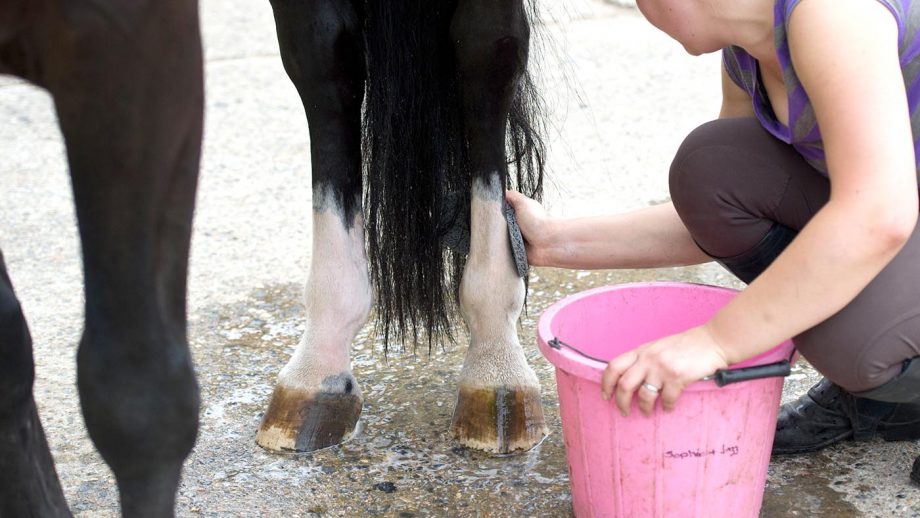Learning how to bridle a horse is a crucial skill for any horse enthusiast. Whether you’re a beginner or an experienced equestrian, understanding the nuances of this process can enhance your overall riding experience. In this comprehensive guide, we’ll explore the step-by-step method to bridle a horse safely and efficiently.

Understanding the Basics
Before delving into the details of how to bridle a horse, it’s essential to familiarize yourself with some basic concepts. The bridle is a key component of horse riding; it helps the rider communicate with the horse. A well-fitted bridle ensures your horse’s comfort and can significantly affect their performance.
Choosing the Right Bridle
Selecting the appropriate bridle for your horse is the first step. Various kinds of bridles are available, including snaffle bridles, curb bridles, and bitless bridles. Each type serves a different purpose and offers different levels of control and comfort. Experts recommend consulting with a professional or experienced horse owner to choose the best bridle suited to your horse’s needs.
Types of Bridles
- Snaffle Bridle: Known for being gentle, great for beginner riders.
- Curb Bridle: Offers more control, often used in advanced riding.
- Bitless Bridle: Ideal for horses sensitive to bits or for riders who prefer a minimalist approach.
Step-by-step Guide on Bridling a Horse
Preparing the Horse
Begin by ensuring your horse is calm and standing still. Approach your horse from the left side, known as the ‘near side.’ Gently stroke your horse to keep them relaxed.
Fitting the Bridle
- Start by placing the reins over the horse’s neck. This prevents the horse from wandering off during the process.
- Hold the bridle’s crown with your right hand and the bit with your left hand. Offer the bit to the horse by gently placing it against their lips.
- If the horse resists taking the bit, calmly encourage them by placing your thumb in the corner of their mouth. Most horses will open their mouths reflexively.
- Once the bit is in place, lift the bridle over the horse’s ears. Ensure the browband is resting comfortably on their forehead.
- Adjust the noseband and chin strap to a secure yet comfortable fit. You should be able to fit about two fingers under each strap without pinching.
Checking the Fit
It’s important to check the fit of the bridle to prevent discomfort or pain for your horse. The bit should sit comfortably in the horse’s mouth without pinching, and the straps should be snug but not tight.
Comfort Checks
Regularly check if the bridle is wearing out or causing any discomfort by observing the horse’s reaction and looking for any signs of wear or damage.
Troubleshooting Common Issues
If the horse is showing signs of distress or refusing the bit, it could be due to several reasons such as dental issues or an unsuitable bridle. Consulting a veterinarian or equine dentist can be beneficial.
Maintaining Your Bridle
Regular maintenance of your bridle is key to its longevity and your horse’s comfort. Clean it thoroughly after use, checking for wear and tear.
Manage riding gear to ensure safety.
Steps for Bridle Care
- Disassemble and clean all parts regularly.
- Use leather conditioners to keep it supple.
- Store in a cool, dry place.
Building a Stronger Bond
Bridling is an excellent opportunity to strengthen the bond between you and your horse. Take your time, reward your horse with treats and affection, and create a positive experience.
Groundwork exercises are excellent for improving communication.
Safety Precautions
Always prioritize safety when bridling your horse. Ensure the environment is safe and free from distractions. Be aware of your horse’s mood, as horses can be unpredictable at times.
Additional Resources for Equestrians
For more tips on being a responsible and informed horse owner, read about riding safety and learn about essential riding gear.
Ready to Start Bridling?
Now that you understand how to bridle a horse effectively, you’re ready to begin your journey with confidence. Embrace the process, learn from each experience, and enjoy the wonderful bond shared with your horse.

FAQ Section
- Q: How often should I check the fit of the bridle?
A: Regularly, especially if your horse’s weight fluctuates or if they seem uncomfortable. - Q: Can I use a bitless bridle for any horse?
A: Yes, but it’s best suited for horses with sensitivities or advanced riders preferring less restriction. - Q: Why is my horse refusing to take the bit?
A: Often, it could be due to dental issues, discomfort, or unsuitable bit size.








